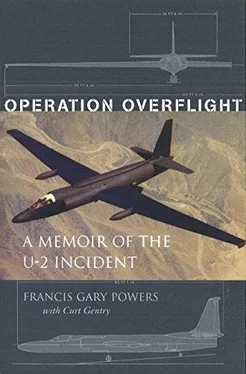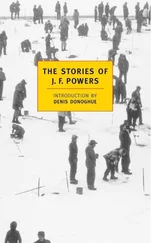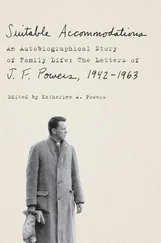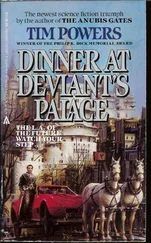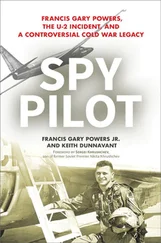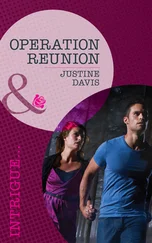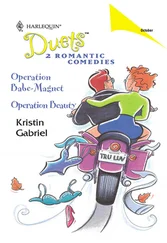If Eisenhower’s intention was that Khrushchev learn of the flight, it must be said that, whatever else may have happened, he was certainly successful in that.
Some mysteries remain. Eisenhower’s reason for authorizing the flight is one.
Even more fascinating in some ways is another: Was the May 1, 1960, flight of the U-2 “betrayed?”
The CIA has said it wasn’t. But again there are clues. Although the evidence is by no means conclusive, three separate—and seemingly unrelated—incidents indicate that this might have been the case. They are presented here strictly for purposes of speculation.
In July, 1960, William Hamilton Martin and Bernon Ferguson Mitchell, two cryptologists employed by the National Security Agency, “disappeared.” On September 6, 1960, they surfaced in Moscow, at a press conference, where they revealed a great deal of information they claimed to have learned while working for the secret agency. One of their claims was that the NSA was monitoring the codes of some forty nations, including many friendly to the United States, even to the extent of intercepting communications of the various governments to their delegations at the United Nations.
I was informed of their defection by the Soviets a day or two after this—shortly before I was to be transferred from Lubyanka to Vladimir. At the time, however, I was unaware whether the story was simply a ruse designed by my captors to trap me into some admission, or whether the defection and press conference had actually taken place.
Not until my return to the United States did I learn the particulars of the case—that Martin and Mitchell, both alleged homosexuals, had gone to work for the National Security Agency early in 1957; in February, 1958, for reasons known only to themselves, they had joined the Communist party and begun transmitting secret information to the Russians.
The full extent of this information has never been made public by either side. That the two men knew of the U-2 overflights, however, there can be no question. Obviously acting under instructions from Moscow, but posing as concerned civil servants, they called on Representative Wayne Hays, Democrat, Ohio, to protest the overflights, apparently in the hope he would apply congressional pressure to have them stopped. (That the Soviets would thus risk exposing two such well-placed agents is indicative of how desperately they wanted to stop the overflights.)
The National Security Agency was well aware of the overflights, because, as has since been made public, the NSA was involved in processing and studying electronic data received from the U-2 flights.
Both men were still working for the NSA at the time my last mission was scheduled. Whether in the course of their duties they learned of it and gave this information to their Communist contact is one of those questions which remains unanswered. Among the people I talked to following my return to the United States was an agency man who had worked in the communications section at Adana. His position was supervisorial; he knew what was going on. Curious, I asked him about the delayed Presidential approval on this particular flight.
This was only one of two things which distinguished this flight from those which preceded it, he told me. The other, a mistake that should never have been made, was the result of a breakdown of communications between Germany and Turkey.
The overflight orders were conveyed from the United States to Germany, and from Germany to Turkey, via radio code. From Turkey they were then transmitted to the crew in Pakistan, by similar means. The night prior to the flight, having worked around the clock several days awaiting transmission of Presidential approval, the communications man had gone to bed for a few hours, leaving an assistant in charge. During his absence, radio communications between Germany and Turkey broke down. When the approval did come through, the agent in Germany relayed it to Adana over an open telephone line—something absolutely forbidden in any circumstance. The assistant had then relayed it to Peshawar.
The communications man learned of this only the next morning, on arriving at work. Had he been on duty when the message came in, he swore, he never would had sent it further, the risk of the call’s having been monitored being so great.
Thus there is a possibility that the Russians knew I would be taking off even before I did.
More than one writer has suggested that the CIA itself betrayed the flight, as a part of some vast conspiracy to wreck the Summit. Lest in mentioning the above I encourage further exploitation of this wild fantasy, it should be stated that the best—and most conclusive—evidence against this theory is the simplest: the agency’s total lack of preparedness for the crash possibility, and the “monumental flap” that ensued.
The third bit of “evidence” poses far more questions than it answers. Yet it is, in its own way, by far the most intriguing. It concerns the possibility of the altitude of the U-2 having been betrayed.
When the U-2’s altitude is referred to as “secret,” that term is qualified. In addition to those personally involved in U-2 flights, a number of others, by the nature of their duties, had access to this information. These included air-traffic controllers and at least some of the radar personnel at the bases where U-2s were stationed.
In 1957 the U-2s were based in a new location, Atsugi, Japan.
In September of that year a seventeen-year-old Marine Corps private was assigned to Marine Air Control Squadron No. 1 (MACS-1), based at Atsugi. MACS-1 was a radar unit whose duties included scouting for incoming foreign aircraft. Its equipment included height-finding radar. The private, a trained radar operator, had access to this equipment.
He remained in Japan until November, 1958, at which time he was returned to the United States and assigned to Marine Air Control Squadron No. 9 (MACS-9) at the Marine Corps Air Station at El Toro, California. El Toro was not a U-2 base, but U-2s frequently flew over this portion of Southern California. At El Toro he had access not only to radar and radio codes but also to the new MPS 16 height-finding radar gear.
In September, 1959, he obtained a “hardship discharge” from the U.S. Marine Corps.
The following month he defected to the Soviet Union.
On October 31 he appeared in the American Embassy in Moscow to state his intention of renouncing his U.S. citizenship. According to Richard E. Snyder, the second secretary and senior consular official, and John A. McVickar, Snyder’s assistant, who was also present, during the course of the conversation he mentioned that he had already offered to tell the Russians everything he knew about the Marine Corps and his specialty, radar operation. He also intimated that he might know something of “special interest.”
His name was Lee Harvey Oswald.
Six months later my U-2 was shot down.
Oswald’s familiarity with MPS 16 height-finding radar gear and radar and radio codes (the latter were changed following his defection) are mentioned in the testimony of John E. Donovan, a former first lieutenant assigned to the same El Toro radar unit as Oswald, on page 298 of Volume 8 of the Warren Commission Hearings . According to Donovan, Oswald “had the access to the location of all bases in the west coast area, all radio frequencies for all squadrons, all tactical call signs, and the relative strength of all squadrons, number and type of aircraft in a squadron, who was the commanding officer, the authentication code of entering and exiting the ADIZ, which stands for Air Defense Identification Zone. He knew the range of our radar. He knew the range of our radio. And he knew the range of the surrounding units’ radio and radar.”
Oswald’s conversation with Snyder is mentioned at least three times in the Report of the Warren Commission on the Assassination of President Kennedy (page references are to The New York Times edition, published by McGraw-Hill, October, 1964):
Читать дальше
